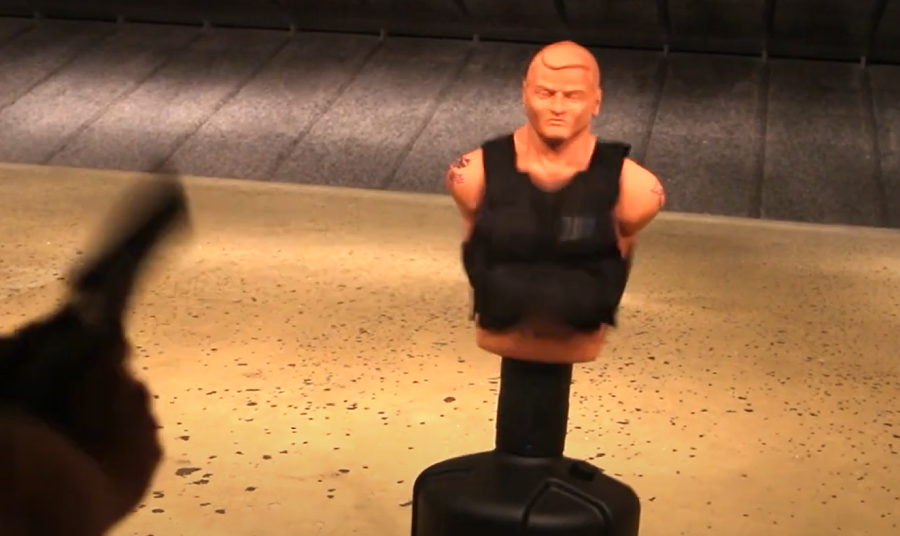A bulletproof vest isn’t a magic invulnerable shield. If someone shoots you and the round hits your vest – you will live provided that you were shot with a round your vest was rated for. However, even though the bullet didn't get through, you'll still be left winded and in pain. That's because of something called backface deformation (BFD).
BFD Explained: The Armor Bends, You Don't (Ideally)
In the simplest terms, backface deformation is simply how much a bulletproof vest bulges inward when it's hit by a bullet. Imagine someone hitting a really tough piece of playdough – it won't break, but it will definitely deform (hence the term backface deformation). While the bullet will not penetrate the vest, the bullet's energy is still transferred to the person wearing the vest.
How BFD Affects Soft vs. Hard Armor
There are two main types of bulletproof vests: soft armor and hard armor.
The soft armor made by BulletSafe is typically made of a material called ultra-high molecular weight polyethylene (UHMWPE), an extremely resilient, flexible and lightweight fabric with a higher tensile strength than steel. NIJ Certified to withstand rounds up to .44 magnum, soft armor vests are bendable and are generally more comfortable to wear than their hard plate counterparts. The backface deformation in soft armor is much more violent than it is in hard plates because UHMWPE lacks the rigidity of a hard plate.

9-pellet 00 buckshot on a VP3. Credit: 1ShotTV
Hard armor uses ballistic plates made of materials like UHMWPE or ceramic. These plates are much stiffer and can stop higher-powered bullets. However, ceramic plates are heavy and bulky, and UHMWPE typically have less backface deformation than soft armor because of their rigidity. For a plate to pass NIJ standards, its backface deformation cannot exceed 44mm.
BFD and Injuries
Even though the vest stops the bullet, backface deformation can cause blunt force trauma. This is basically a fancy way of saying your body gets bruised or even cracked from the impact. Depending on the bullet's power and the vest's quality, BFD can range from a nasty bruise to serious injuries. According to the FBI, no one has ever been killed by excess backface deformation, however this does not mean death from BFD is impossible.
Minimizing BFD
Trauma pads are soft inserts made of ballistic material worn behind hard armor plates. They help absorb some of the remaining energy and reduce BFD. Placed behind bulletproof plates, some trauma pads are not typically bulletproof, but they are good at absorbing high impact energies and deflecting them away from the user. They are usually shaped like a rectangle to protect the wearer’s vital organs such as the lungs, heart, and abdomen. Unlike most trauma pads, a BulletSafe backpack panel can fulfill the same function as a trauma pad while also providing added ballistic protection. The backpack panel has the same rectangular shape as a trauma pad and can just as effectively disperse the energy of a round, minimizing backface deformation in the process.
Remember: to ensure maximum protection against backface deformation, consider investing in a trauma pad or a BulletSafe backpack panel. While a bulletproof vest will save your life regardless, a trauma pad can serve to prevent further injury.
To shop BulletSafe bulletproof armor, click here.
Frequently Asked Questions about Backface Deformation
1. What is backface deformation?
Backface deformation is how much a bulletproof vest bulges inward when hit by a bullet.
2. How does BFD affect soft vs. hard armor?
Soft armor experiences more violent backface deformation compared to hard plates due to their flexibility.
3. Can BFD cause injuries?
Yes, backface deformation can cause blunt force trauma ranging from bruises to serious injuries.
4. How can BFD be minimized?
Trauma pads made of ballistic material worn behind hard armor plates help absorb energy and reduce BFD.
5. Has anyone been killed by excess BFD?
According to the FBI, no one has been killed by excess backface deformation, but serious injuries can occur.

